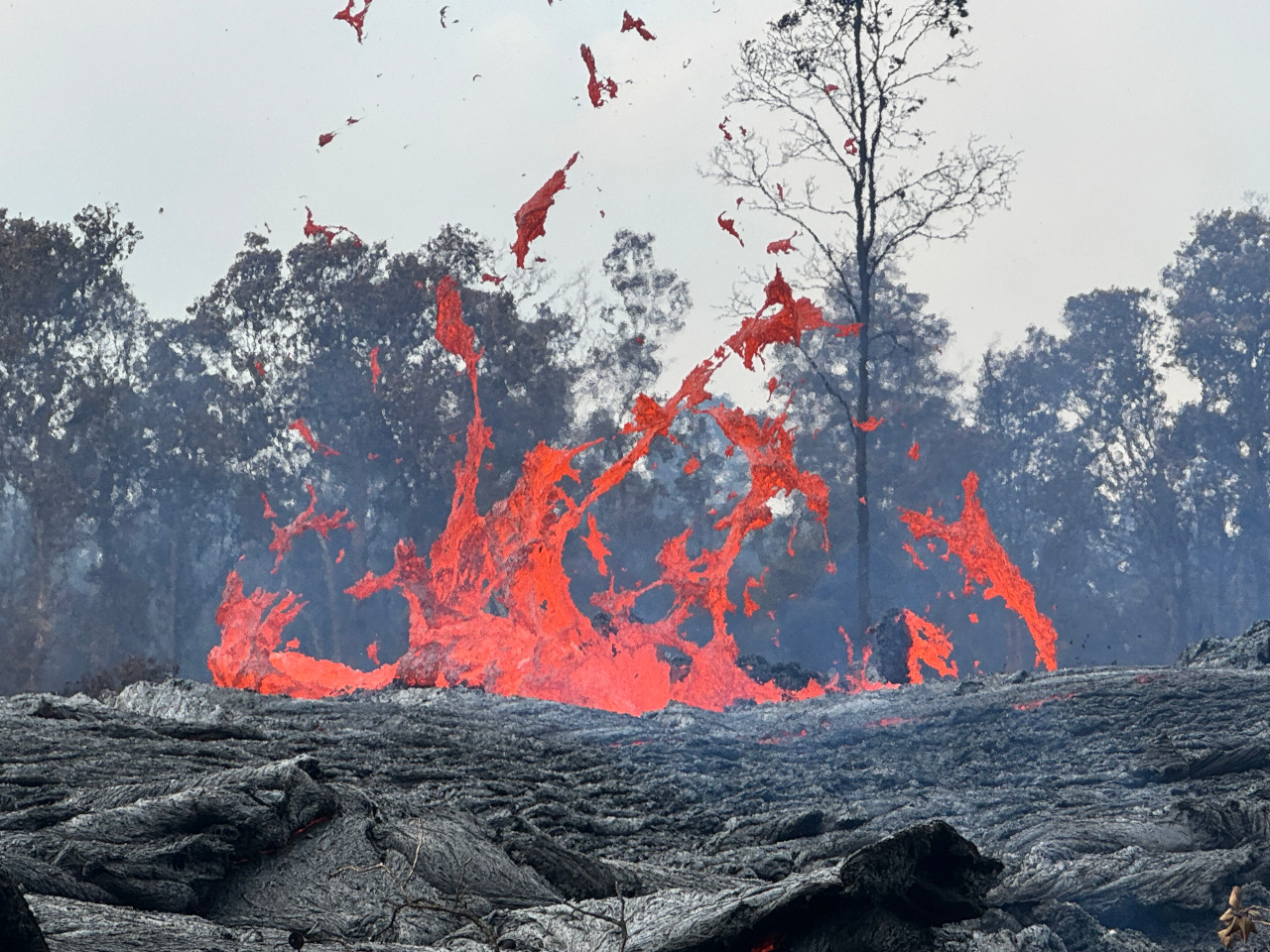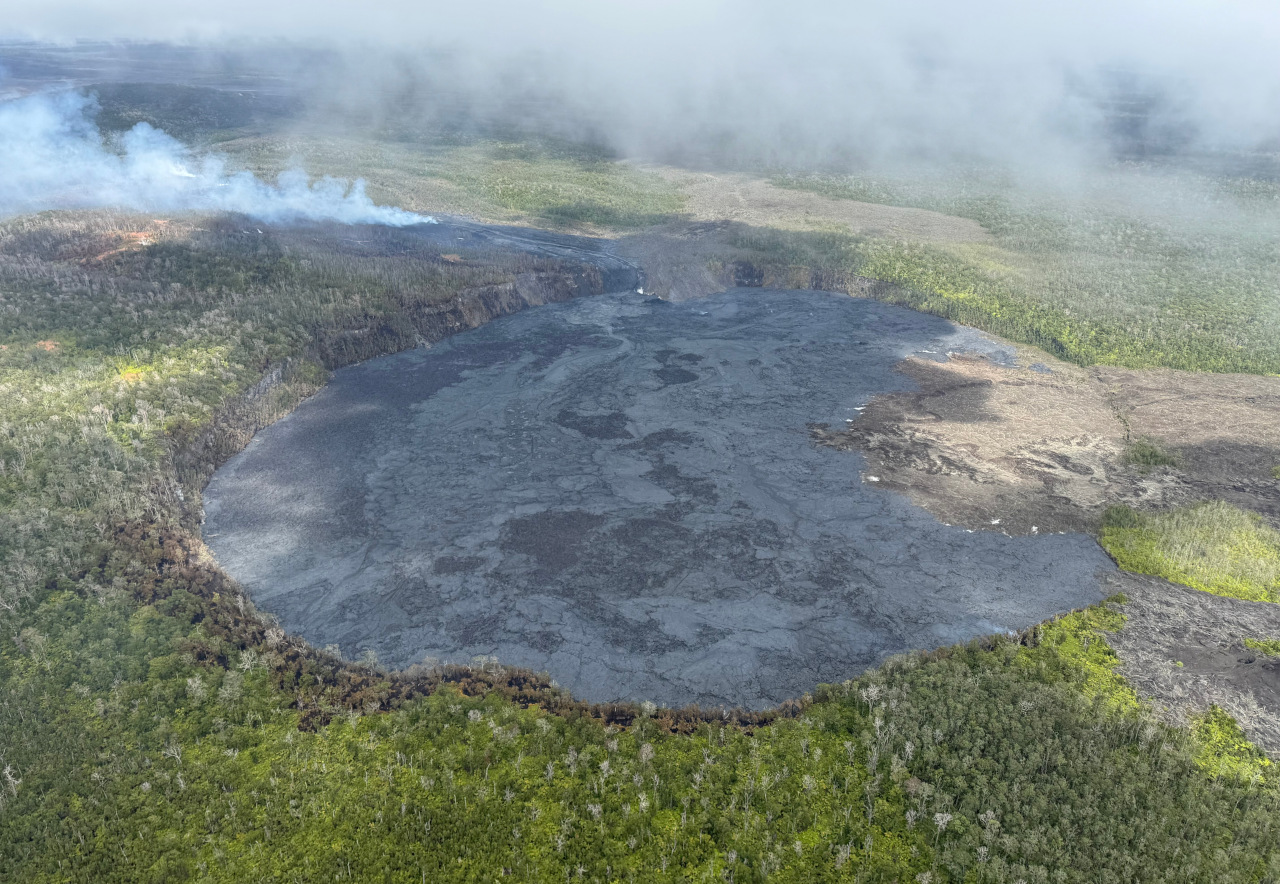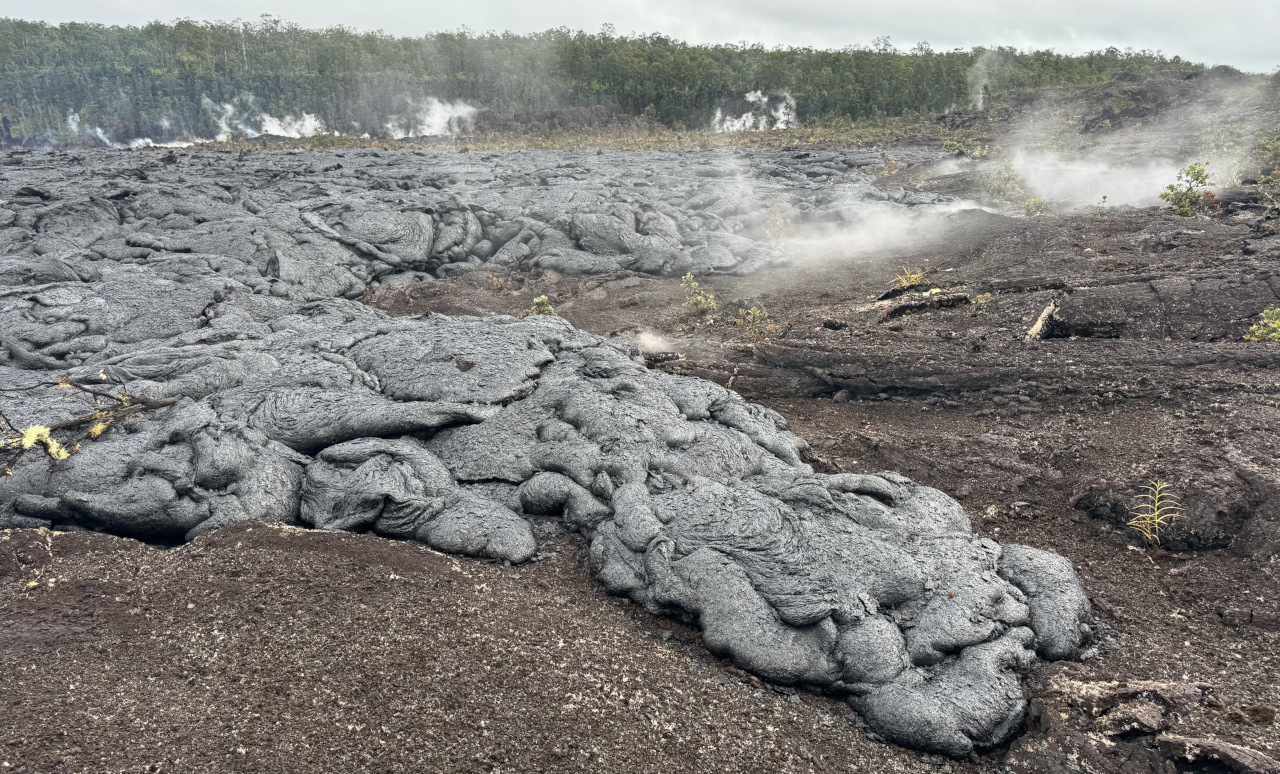
USGS: “USGS Hawaiian Volcano Observatory field crews reported small fountains and lava flows erupting from one of the western fissures just before 9 a.m. HST on September 20, 2024. By 10 a.m. HST, that activity had ceased and the middle East Rift Zone eruption of Kīlauea had paused.” (USGS photo by M. Patrick)
(BIVN) – The current eruption of Kīlauea volcano is paused as of Friday morning.
“The large channels and lava falls crusted over between 9 and 10 PM HST last night, September 19,” the USGS Hawaiian Volcano Observatory reported at 10:13 a.m. HST. “Glow from the vent had decreased significantly by 2:30 AM HST this morning. Field crews reported minor spattering and small fountains at one end of the vent as of 8:30 AM HST, but this had ended by 10 AM HST.”
The Volcano Alert Level and Aviation Color Code remains at WATCH/ORANGE.
Thus ends the fourth phase of fissure activity as part of the new eruption of Kīlauea on the middle East Rift Zone. Volcanic tremor has decreased significantly in the area of the eruption, however GPS instruments “continue to show inflation at deeper levels beneath the area between Maunaulu and Nāpau Crater,” the USGS Hawaiian Volcano Observatory says.
“Each eruption has increased in volume compared to the prior eruption so far in this sequence,” the USGS HVO scientists wrote. “Additional eruptions, if there are any, might continue to increase in size as well. Multi-day fissure eruptions are not unusual and current eruptive activity appears to be linked to the continuing supply of magma from the summit.”
From the USGS HVO on Friday morning:
Summit Observations: Six small, shallow earthquakes were detected beneath the Kīlauea summit region over the past 24 hours. The tiltmeter at Uēkahuna transitioned sharply from deflation to minor inflation yesterday at about 4:15 PM HST. The summit tiltmeter at Sandhill continues to record strong deflation. This pattern suggests that only the deeper, southern summit magma body is continuing to supply magma to the middle East Rift Zone. The most recent measurement of SO2 emission rate at the summit was 60 tonnes per day on September 17, 2024.

USGS: “This image, captured during a UGSS Hawaiian Volcano Observatory monitoring overflight the morning of September 20, 2024, shows that most of Nāpau Crater floor has been covered with new lava during the recent Kīlauea middle East Rift Zone eruption.” (USGS photo by M. Patrick)
Rift Zone Observations: The eruptive fissure west of Nāpau Crater diminished greatly overnight. Beginning around 8 PM HST last night the lava channels and falls began to crust over suggesting diminished lava supply. All of the open channels completely crusted over between 9 and 10 PM HST last night. Strong glow from the vent began to diminish around 2:30 AM HST and continued waning until daylight. Mapping this morning shows that lava flows cover about 2/3 of the floor of Nāpau Crater and aren’t significantly larger than they were yesterday. Field crews reported small fountains and lava flows erupting from one of the earlier western fissures this morning at 8:50 AM HST but had stopped by 10:00 AM HST. Effusion rates of roughly 5-15 cubic meters per second (6-16 cubic yards) were estimated during the most active part of yesterday’s fissure eruption. In total, this eruption has covered more than 630,000 square meters (156 acres) of Nāpau Crater and areas to the west since Sunday night.
Shallow earthquake counts remain very low in the MERZ with about 10 in the past 24 hours. Tremor recorded on the MERZ seismometers close to the eruption site decreased significantly late yesterday and early this morning as eruptive activity died down by 2:30 AM HST. Tiltmeters in the MERZ continue to show no significant shallow deformation, but GPS instruments continue to show inflation at deeper levels beneath the area between Maunaulu and Nāpau Crater.
Sulfur Dioxide (SO2) emission rates measured yesterday, September 19, were 30,000 tonnes per day for the new vent that opened in the afternoon.
All activity is currently confined to the middle East Rift Zone between Makaopuhi Crater and Puʻuʻōʻō and there are no indications of any changes further downrift in the MERZ or in the LERZ.


by Big Island Video News1:02 pm
on at
STORY SUMMARY
HAWAIʻI VOLCANOES NATIONAL PARK - Field crews reported minor spattering and small fountains at the new middle East Rift Zone vents, but the activity ended by 10 a.m. HST.